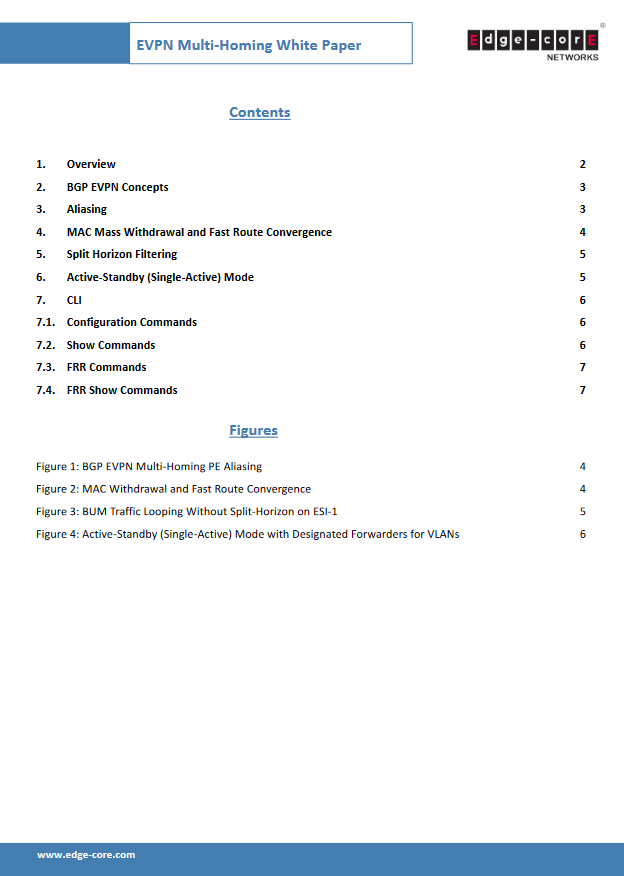
The intended audience for this white paper is familiar with networking terms and may refer to the “Network Definitions White Paper” for additional information. Next, one may also read the companion white papers titled “BGP EVPN VXLAN” and “Multi Chassis Link Aggregation with Active-Standby”. All the aforementioned documents are part of the meta paper, “BGP-EVPN-VXLAN-MC-LAG White Paper”. Ethernet Virtual Private Network (EVPN) has the following homing modes for connection between Provider Edge (PE) and Customer Edge (CE) devices:
• Single homing: A customer edge (CE) device connects to only one provider edge (PE) device.
• Multi-homing: A customer edge (CE) device connects to more than one provider edge (PE) device, ensuring redundant connectivity. Redundant PE devices ensure the inexistence of traffic disruption when a network link failure occurs between a CE and a PE device.
Multi-homing is a standards-based replacement for Multi-Chassis LAG (MC-LAG) in data centers deploying Clos network topologies. There are two types of multi-homing: • Single-Active (Active-Standby): Only a single PE among a group of PEs attached to a particular Ethernet Segment (ES) is allowed to forward network traffic to and from that ethernet segment–both upstream and downstream traffic.
- Download
- Download 80
- File Size 987 KB
